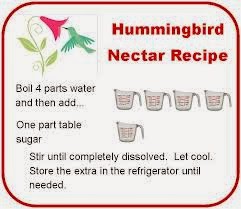HOUSEPLANTS AS GIFTS
If you are searching for a houseplant
to give as a gift this season you can't go wrong with a 'croton'.
Crotons (Codiaeum) have very colorful leaves which can brighten any winter day. With basic care these colorful houseplants will easily survive for years in a sunny window. A few hours of sunlight is the key to maintaining the best color on the leaves. Red, yellow, pink and green are often on the same leaf with no two leaves identical.
Crotons (Codiaeum) have very colorful leaves which can brighten any winter day. With basic care these colorful houseplants will easily survive for years in a sunny window. A few hours of sunlight is the key to maintaining the best color on the leaves. Red, yellow, pink and green are often on the same leaf with no two leaves identical.
When giving a houseplant as a gift it
is important to consider its new home. If
the recipient often says "I kill every plant I get" give them a plant
that is easy to care for such as a Christmas cactus (Schlumbergera). Blooming during the holiday season these
tropical plants are very easy to keep alive. The key to bringing this plant
into flower every year is natural sunlight. As the days get shorter it triggers
these plants to develop their flowers.
 |
Proper care and natural sunlight are all the Christmas cactus require to
trigger its annual bloom cycle.
|
Orchids and Poinsettia, both popular
gifts are very sensitive to drafts and temperature fluctuations.
It is important to get your plant home from the shop without damaging it. Cover the plant with plastic or a paper bag, then move it from the store to a warm spot in your car, not the cold car trunk. Once home remove it immediately from the wrapping (which will now hold the cold) and check the soil for moisture. When taking your gifts to their new home repeat the process.
This care will prevent your orchids from dropping unopened blooms or your poinsettia from wilting away in just a few days. If the cashier is busy, step to the side and properly cover the plants before leaving the store.
It is important to get your plant home from the shop without damaging it. Cover the plant with plastic or a paper bag, then move it from the store to a warm spot in your car, not the cold car trunk. Once home remove it immediately from the wrapping (which will now hold the cold) and check the soil for moisture. When taking your gifts to their new home repeat the process.
 |
Orchids make wonderful gifts. Now with modern propagation techniques they
are more affordable
and popular than ever.
|
This care will prevent your orchids from dropping unopened blooms or your poinsettia from wilting away in just a few days. If the cashier is busy, step to the side and properly cover the plants before leaving the store.
 |
| After being hit by a blast of cold air these orchids blossoms are wilting and will drop off before opening. |
Finally find the care instructions
for your plant in a book or on the internet, make a copy and give this with the
plant. It will help answer any questions,
ensure proper care and give the plant a better chance for survival.
Merry Holidays,
James















































